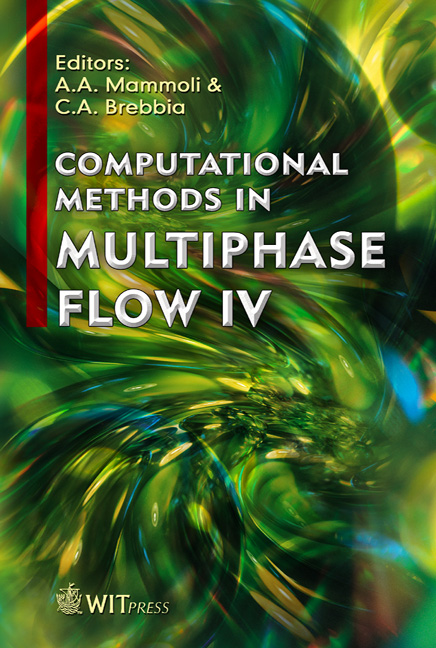Viscoelastic Drop Deformation In Simple Shear Flow Investigated By The Front Tracking Method
Price
Free (open access)
Transaction
Volume
56
Pages
10
Published
2007
Size
1,022 kb
Paper DOI
10.2495/MPF070211
Copyright
WIT Press
Author(s)
C. Chung, M. A. Hulsen, K. H. Ahn & S. J. Lee
Abstract
The two-dimensional deformation of immiscible drop in simple shear flow was investigated using the front tracking method. Interface particles were traced by Runge–Kutta 2nd order method and the boundary immersed method was used for calculation of surface tension force at the global mesh. Isothermal, incompressible and creeping flow was assumed. The main purpose of this research is to analyze the effect of viscosity ratio and elasticity on the drop deformation. Oldroyd-B model was used as a constitutive equation with stabilizing schemes such as DEVSS-G/SUPG and matrix logarithm. As for the Newtonian drop deformation in the Newtonian matrix, there was no breakup until Ca=1 when the viscosity ratio was one. And the damped oscillation was observed when the viscosity ratio was not unity. The effect of elasticity on the drop deformation was also investigated. As De increased, the drop was more deformed and orientation angle declined to the shear direction. Keywords: drop deformation, viscosity ratio, elasticity, front tracking method, immersed boundary method, DEVSS-G/SUPG, matrix logarithm. 1 Introduction The study of drop deformation in simple shear flow provides an insight for understanding the physics of complex flows. Numerical analysis is required for analyzing applications including polymer processing and multi-phase flow in micro-channels. There have been several studies on the deformation of a drop in shear flow since the pioneering works of Taylor [1,2]. Also numerical approaches [3,4] for the same problem showed good agreements with experiments for
Keywords
drop deformation, viscosity ratio, elasticity, front tracking method, immersed boundary method, DEVSS-G/SUPG, matrix logarithm.





